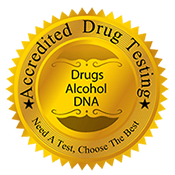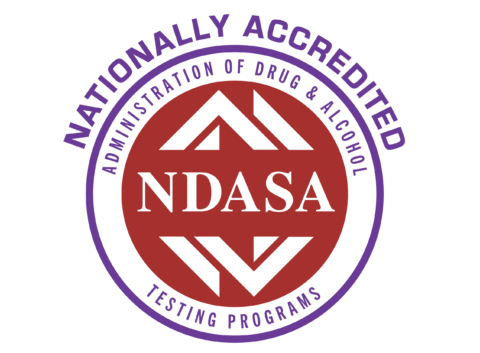
Drug Test/Screening Collector Training & Certification, Niagara Falls, NY
For
Collection Sites, Medical Facilities, DER's, HR Managers, Safety Managers, Court Personnel, Probation Officers, TPA's
Accredited Drug Testing provides a comprehensive online/web-based Urine Drug Testing Collector Training and Certification course in Niagara Falls, NY for persons required as part of their responsibilities to perform or supervise urine drug testing specimen collections. The collector training program may be completed with or without the required mock collection proficiency assessments. Upon completion of the training program, students will receive a certificate of successful completion of the training course. In Niagara Falls, NY to be qualified/certified as a DOT urine drug test collector, you must satisfactorily complete both the training course and a minimum of 5 error free proficiency mock demonstrations.
The Drug Test Collector plays a critical role in the workplace drug screening process. Along with the employer, the testing facility and the Medical Review Officer (MRO), the collector is an essential part of a system developed to ensure drug-free workplaces for the sake of public safety.
As the collector, you are the only individual in the drug-testing process who has direct, face-to-face contact with the employee. You ensure the integrity of the urine specimen and collection process and begin the chain of custody that includes the laboratory; the MRO; the employer; and, possibly, the courts.
This training is a professional-level course that provides the knowledge and skills to qualify Drug Test Collectors to perform U.S. Department of Transportation-regulated drug tests and non-regulated tests. Course participants also have the option of becoming professionally certified after completion of this course. This designation confirms that the collector is committed to the highest standards in the drug and alcohol testing industry.
The Course
This professional-level course meets the regulatory standards of U.S. Department of Transportation (DOT) rule 49 CFR Part 40 and provides a solid foundation for a wide range of testing programs.
- Library of terms & resources
- Universal skills set
- Multiple industries
- Lessons
- DOT Qualification
- Public sector
- Short quizzes & final examination
- Professional Certification
- Private sector
- Mock collections
- Regulated by local, state and federal authorities
- Signature
How to become a DOT Qualified Urine Collector?
To become qualified as a collector, you must be knowledgeable about Part 40 regulations, the current "DOT Urine Specimen Collection Procedures Guidelines," and DOT agency regulations applicable to the employers for whom you will perform collections, and you must keep current on any changes to these materials. You must also (1) successfully complete a qualification training program and (2) pass a monitored proficiency demonstration, as required by DOT regulations [See 49 CFR Part 40.33 (b-c), effective August 1, 2001]. Please note: there is no "grandfather" clause or waiver from this requirement. A collector's qualifications are not location/collection site specific, and their eligibility will follow them anywhere DOT Agency regulated urine specimens are collected. There is no requirement for qualified collectors to register or to be on any federally-maintained or federally-sponsored list, but they are required to maintain (for Federal inspection) documentation of successful completion of their training and proficiency demonstration requirements.
How to Take the Course
The Drug Test Collector Training involves multiple parts that need to be completed in a specific order to achieve certification.
- Before starting the training, the collector must:
- review 49 CFR Part 40 and be familiar with the regulatory language;
- review the DOT Urine Specimen Collection Guidelines;
- review "Instructions for Completing the Federal Drug Testing Custody and Control Form for Urine Specimen Collection"
- watch DOT's 10 Steps to Collection Site Security and Integrity video.
- and download the sample Custody and Control Form. This form guides the entire drug-collection process. Review the document and have it at hand through the entire course. (All required materials are also available in the Reference Library.) NOTE: The 2017 version of the CCF is no longer current. If you intend to use it, you must attach a Memorandum for Record (MFR).
- Take the course Pre-Test to show familiarity with the subject matter based on a review of the materials provided.
- Complete the lessons of the training along with the required short quizzes.
- Take the final exam. A score of at least 90 percent is required.
- When you pass the online portion of this training, continue to the Next Steps lesson for instructions on how to set up five mock collections with a live examiner. These must be scheduled within 30 days of course completion and are required for qualification and certification.
- Once the mock collections are completed without error, you will be qualified and can perform both federally regulated and non-regulated drug test collections.
- To be certified, qualified collectors are asked to sign an agreement promising to adhere to the standards set in the training. The course administrator will then issue a certification form documenting that the collector is both a USDOT Qualified and Professionally Certified Drug Testing Collector. Contact the course administrator for more information.
Additional Courses Available
- DOT Alcohol Screening Test Technician Training
- Saliva/Oral Fluid Training & Certification
- Certified Drug Test Collector Annual Exam
- DOT Breath Alcohol Technician Training
- Hair Specimen Collector Training & Certification
- DOT Reasonable Suspicion Training Course
- DER Training FMCSA
- DER Training FAA
- DER Training PHMSA
- DER Training FRA
- DER Training FTA
- DER Training USCG
- MRO Assistant Training
- New Business Start Up Overview
** Accredited Drug Testing's Urine Specimen Collector training course is developed in conjunction with the National Drug and Alcohol Screening Association.
Drug and Alcohol Testing Locations Niagara Falls, NY
621 10TH ST 0.3 miles
NIAGARA FALLS, NY 14301
742 Portage Road, Haeberle Plaza 0.5 miles
Niagara Falls, NY 14301
1408 PINE AVE 0.6 miles
NIAGARA FALLS, NY 14301
1370 Military Road, 4.4 miles
Niagara Falls, NY 14304
755 Center Street, Suite 4 5.5 miles
Lewiston, NY 14092
301 Meadow Drive, Unit 76 9.7 miles
North Tonawanda, NY 14120
51 WEBSTER ST 10.3 miles
NORTH TONAWANDA, NY 14120
43 NIAGARA ST 10.9 miles
NORTH TONAWANDA, NY 14120
1173 Sheridan Dr 11.4 miles
Tonawanda, NY 14150
4041 Delaware Avenue, Suite 110 11.5 miles
Tonawanda, NY 14150
2075 Sheridan Dr 12.5 miles
Kenmore, NY 14223
3950 East Robinson Road, Suite 103 12.8 miles
Amherst, NY 14228
2173 Sheridan Drive, 12.9 miles
Tonawanda, NY 14223
155 LAWN AVE, 13.1 miles
BUFFALO, NY 14207
699 HERTEL AVE STE 355 13.5 miles
BUFFALO, NY 14207
2497 DELAWARE AVE inside the WNY Immed. Care 14.1 miles
BUFFALO, NY 14216
2099 NIAGARA FALLS BLVD LOCATED INSIDE IMMEDIATE CARE 14.5 miles
AMHERST, NY 14228
3620 SHERIDAN DR - Suite 100, 15.2 miles
AMHERST, NY 14226
2390 N FOREST RD STE 2 15.3 miles
GETZVILLE, NY 14068
3980 Sheridan Drive - Suite 3, Dent Tower 15.7 miles
Amherst, NY 14226
3500 Main Street, University Plaza 15.9 miles
Amherst, NY 14226
1317 Jefferson Ave, 16.3 miles
Buffalo, NY 14208
1360 North Forest Road, 16.4 miles
Amherst, NY 14221
455 DELAWARE AVE, 16.5 miles
BUFFALO, NY 14202
4500 MAIN ST 16.5 miles
AMHERST, NY 14226
85 HIGH ST 16.5 miles
BUFFALO, NY 14203
1660 KENSINGTON AVE 16.7 miles
CHEEKTOWAGA, NY 14215
700 MICHIGAN AVE 17.0 miles
BUFFALO, NY 14203
3842 Harlem Road, 17.1 miles
Cheektowaga, NY 14215
2629 Delaware Avenue, Delaware Place Plaza 17.1 miles
Buffalo, NY 14216
1150 Youngs Road, 18.0 miles
Williamsville, NY 14221
295 ESSJAY RD 18.2 miles
WILLIAMSVILLE, NY 14221
2871 GENESEE ST 18.4 miles
CHEEKTOWAGA, NY 14225
5891 S TRANSIT RD, 18.4 miles
LOCKPORT, NY 14094
5875 S TRANSIT RD 18.4 miles
LOCKPORT, NY 14094
4181 Transit Road, Transit Town Plaza 18.5 miles
Williamsville, NY 14221
8203 MAIN ST STE 3 STONEGATE OFFICE PARK 18.5 miles
WILLIAMSVILLE, NY 14221
7616 TRANSIT RD LOCATED INSIDE IMMEDIATE CARE 18.5 miles
WILLIAMSVILLE, NY 14221
9388 Transit Road, 18.8 miles
East Amherst, NY 14051
1779 Walden Avenue, Suite 300 19.4 miles
Cheektowaga, NY 14225
770 Davison Road, Suite D 20.2 miles
Lockport, NY 14094
4700 GENESEE ST STE 100 20.4 miles
CHEEKTOWAGA, NY 14225
6507 WHEELER RD 21.3 miles
LOCKPORT, NY 14094
6199 Transit Rd 21.6 miles
Depew, NY 14043
2735 Main Street, 21.8 miles
Newfane, NY 14108
3121 CLINTON ST STE 6 21.9 miles
WEST SENECA, NY 14224
9095 MAIN ST, STE A 22.2 miles
CLARENCE, NY 14031
5014 TRANSIT RD Located Inside Immediate Care 22.3 miles
DEPEW, NY 14043
5340 Transit Road, 22.6 miles
Depew, NY 14043
264 Center Road, 22.7 miles
West Seneca, NY 14224
1900 Ridge Rd 23.0 miles
West Seneca, NY 14224
11020 W CENTER STREET EXT 23.1 miles
MEDINA, NY 14103
3050 ORCHARD PARK RD BLDG B Located Inside Immediate Care 23.6 miles
BUFFALO, NY 14224
4845 Transit Road, 23.8 miles
Lancaster, NY 14043
1106 Union Road, Southgate Plaza 23.8 miles
West Seneca, NY 14224
4729 TRANSIT RD 24.1 miles
DEPEW, NY 14043
Were you looking, instead, for:
All Rights Reserved
Local Area Info: Niagara Falls, New York
Niagara Falls (/na??æ??r?/ ny-AG-?r-?) is a city in Niagara County, New York, United States. As of the 2010 census, the city had a total population of 50,193, down from the 55,593 recorded in the 2000 census. It is adjacent to the Niagara River, across from the city of Niagara Falls, Ontario, and named after the famed Niagara Falls which they share. The city is within the Buffalo–Niagara Falls Metropolitan Statistical Area and the Western New York region.
While the city was formerly occupied by Native Americans, Europeans who migrated to the Niagara Falls in the mid-17th century began to open businesses and develop infrastructure. Later in the 18th and 19th centuries, scientists and businessmen began harnessing the power of the Niagara River for electricity and the city began to attract manufacturers and other businesses drawn by the promise of inexpensive hydroelectric power. After the 1960s, however, the city and region witnessed an economic decline, following an attempt at urban renewal under then Mayor Lackey. Consistent with the rest of the Rust Belt as industries left the city, old line affluent families relocated to nearby suburbs and out of town.
Despite the decline in heavy industry, Niagara Falls State Park and the downtown area closest to the falls continue to thrive as a result of tourism. The population, however, has continued to decline from a peak of 102,394 in the 1960s due to the loss of manufacturing jobs in the area.

